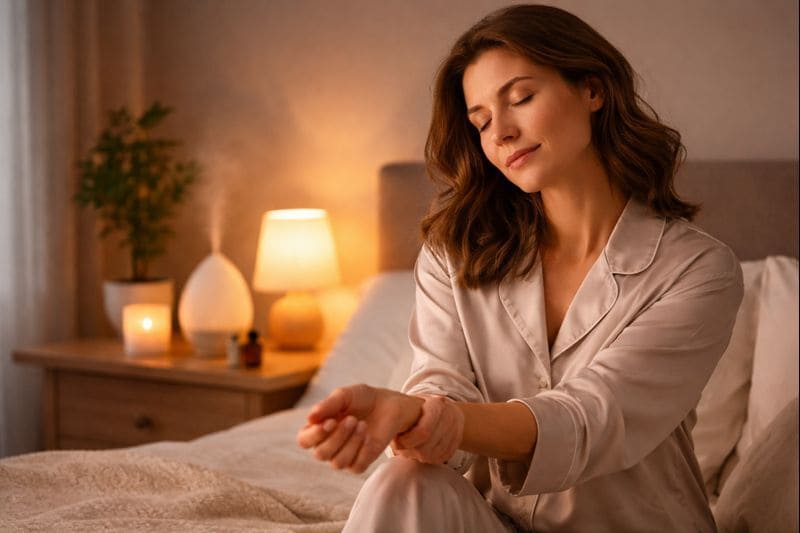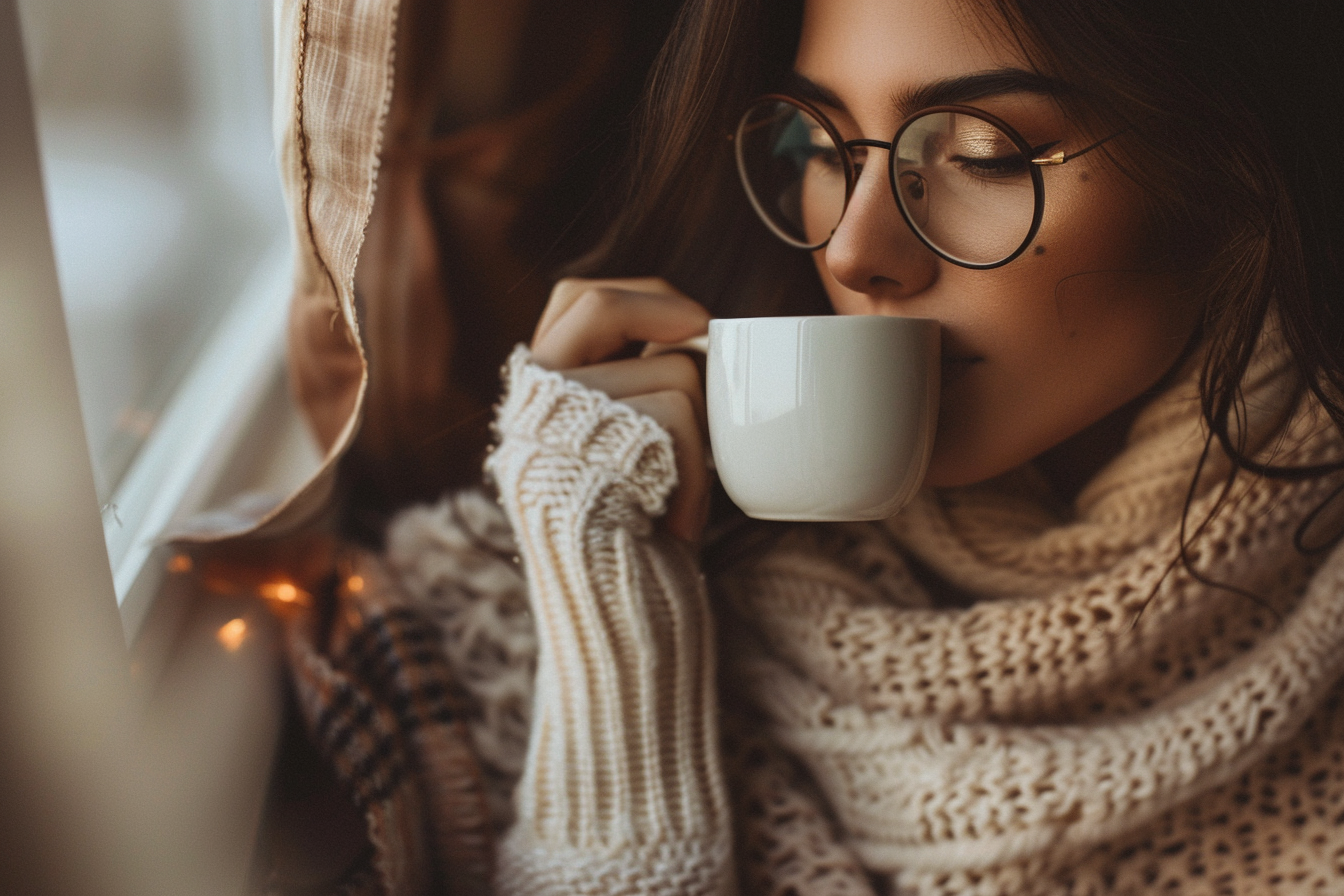If you’re looking to refresh your face and support the natural detoxification process of your skin, incorporating gua sha into your skincare routine is a great way to promote lymphatic drainage. Lymphatic drainage is a gentle massage technique that helps remove excess fluid and toxins from your lymphatic system, reducing puffiness and giving your face a natural glow. In this article, we’ll explore six quick and effective gua sha movements to boost lymphatic drainage and revitalize your skin.
For those new to gua sha, check out this basic guide to gua sha to get started on the fundamentals before diving into these techniques.
What Is Gua Sha Lymphatic Drainage?
Lymphatic drainage is essential for maintaining a healthy complexion. Your lymphatic system is responsible for removing toxins, bacteria, and excess fluid from the body. However, because lymph fluid doesn’t move on its own, it can become stagnant, leading to puffiness, swelling, or a dull complexion. Gua sha—a traditional Chinese medicine technique—stimulates this system, encouraging movement of lymph fluid and reducing facial swelling.
Using a gua sha tool on your face not only improves lymphatic drainage but also helps improve blood circulation, reduce tension, and sculpt facial contours.
“For those with a square jaw, where the masseter muscle is often tight, it’s good to loosen it up. Avoid overusing Gua Sha; instead, gently loosen the area with your fingers before using the tool. For round faces, where puffiness and waste accumulation might be present, use Gua Sha to lift and drain along the jawline (from the chin to the ears) and the cheekbones (from the sides of the nose to the ears),” says Ms. Mai Sogawa, a senior TCM therapist.
1. Start at the Neck to Open Lymphatic Channels
Before working directly on your face, it’s essential to start with the neck. This step helps open up lymphatic channels and encourages fluid movement toward the lymph nodes.
- Use the long side of your gua sha tool.
- Begin at the base of your neck, just above the collarbone, and gently glide the tool upward toward your jawline.
- Repeat this motion 5-7 times on both sides of the neck.
- Keep the pressure light to moderate and angle your tool at 15 degrees against your skin.
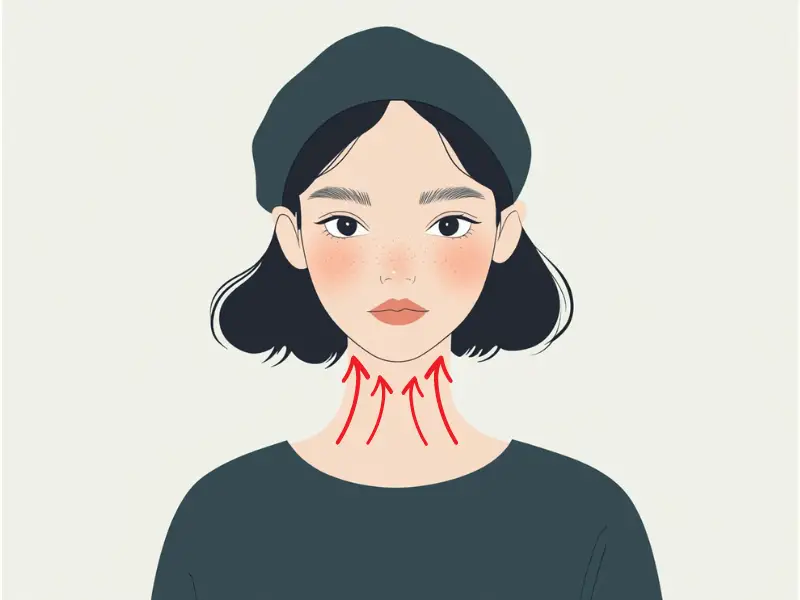
By doing this, you’re clearing the pathway for lymph to drain effectively from your face.
2. Sweep From the Chin to the Ear for Jawline Definition
This movement targets the lower half of your face, specifically promoting lymphatic drainage around the chin and jaw area, where swelling or bloating can often occur.
- Place the tool at the center of your chin, with the curved side of the gua sha hugging the jawline.
- Gently sweep the tool along your jawline toward the bottom of your ear.
- Repeat 5-10 times on each side, always moving in the same direction.
- Keep your strokes slow and even for maximum effect.
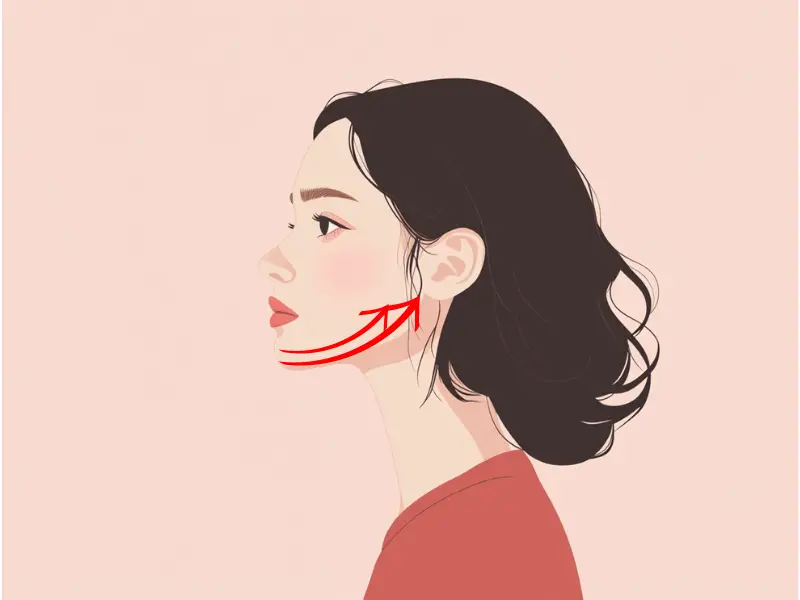
This technique not only drains fluid but also helps define and sculpt your jawline.
3. Glide From the Nose to the Cheeks to Relieve Congestion
Facial puffiness often concentrates in the mid-face region, particularly around the nose and cheeks. This motion helps to drain fluid buildup and reduce congestion.
- Start by placing the gua sha at the side of your nose.
- Gently sweep outward toward the cheekbone, moving toward the hairline.
- Repeat this movement 5-7 times on each side.
- Ensure that your strokes are smooth, keeping your tool at a slight angle.
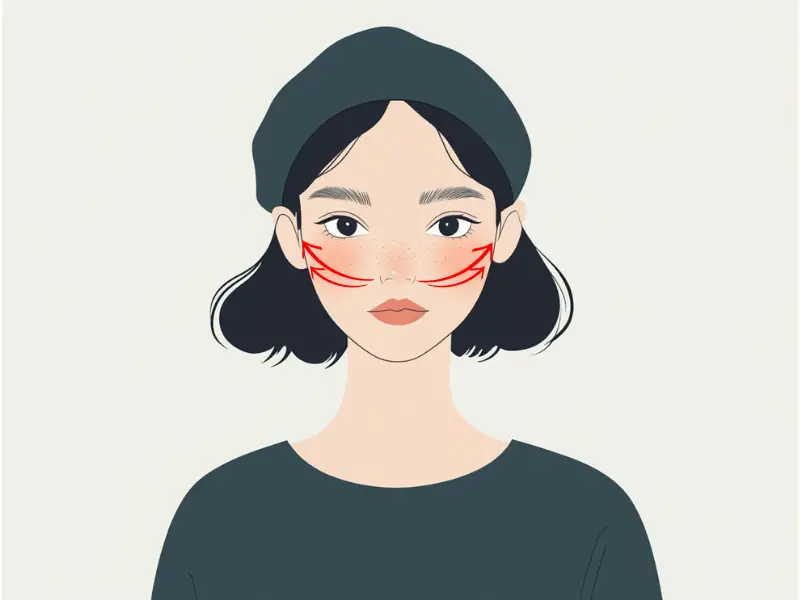
This movement enhances circulation in the cheeks and helps clear any sinus congestion.
4. Drain the Under-Eye Area for Reduced Puffiness
The under-eye area is particularly sensitive and prone to swelling. A gentle gua sha movement can help alleviate puffiness and brighten the skin.
- Use the smaller, rounded end of your gua sha tool.
- Starting at the inner corner of your eye, sweep outward toward the temple.
- Use very light pressure, as the skin in this area is delicate.
- Repeat 5 times on each side, focusing on smooth, fluid motions.
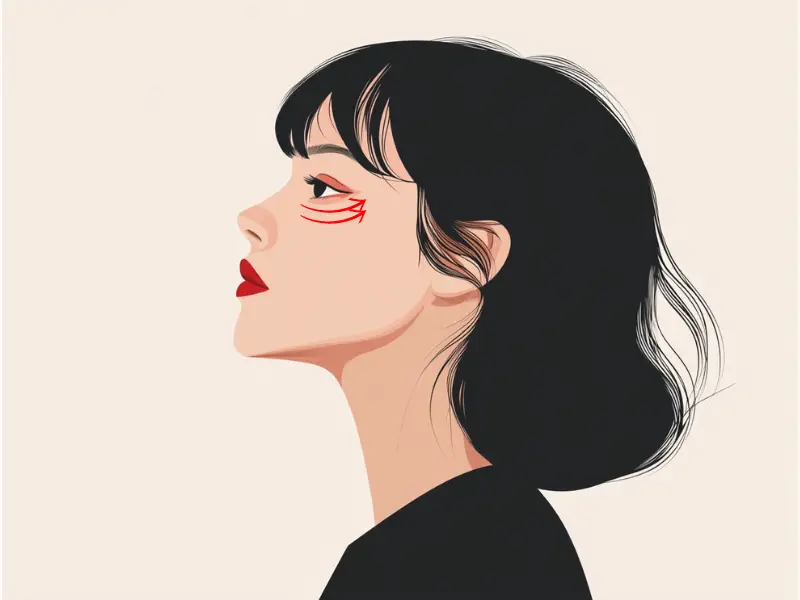
This gentle massage will help reduce the appearance of under-eye bags and give you a more refreshed look.
5. Lift the Brow for a Sculpted Look
Tension often builds up around the brow area, leading to puffiness and heaviness in the forehead. This movement helps drain fluid and relax tension in the brow area.
- Start by placing the gua sha at the beginning of your eyebrow, near the bridge of your nose.
- Glide the tool outward along your brow bone toward the temple.
- Repeat 5-7 times on each side, applying light pressure.
- Follow the natural curve of your brow as you move the tool.
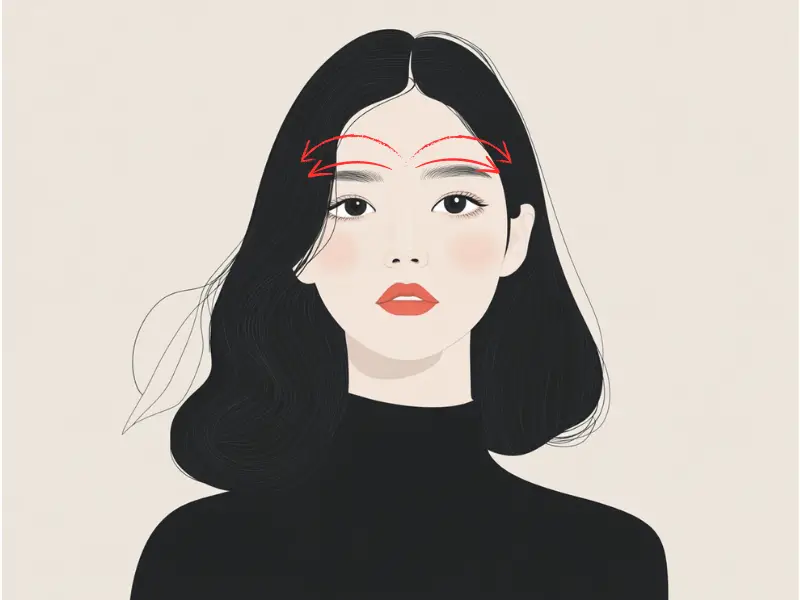
This lifting movement helps to open up the eye area and reduce any fluid retention in the upper face.
6. Smooth the Forehead for Lymphatic Flow and Relaxation
The forehead can often hold stress and tension, which can contribute to stagnant lymph flow. This final gua sha movement helps drain any excess fluid from the forehead area while promoting relaxation.
- Start at the center of your forehead, just above the eyebrows.
- Sweep the gua sha tool outward toward the hairline.
- Repeat this motion across the forehead, moving from the center to each temple.
- Perform 5-7 sweeps on each side, using gentle, soothing pressure.
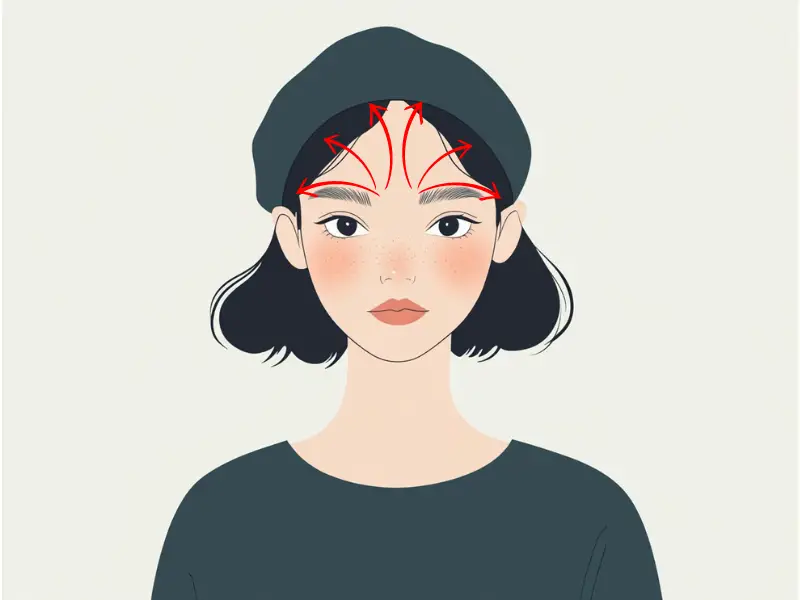
This technique not only supports lymphatic drainage but also helps smooth out fine lines and relax facial muscles.
“The body has more fat and larger muscles compared to the face, so it’s okay to apply a bit more pressure. It’s best to glide the tool from the extremities towards the center of the body, or in the direction of the lymph nodes (e.g., under the arms or around the groin),” explains Ms. Mai Sogawa, highlighting the difference in applying gua sha for facial versus body lymphatic drainage.
Final Tips for Effective Gua Sha Lymphatic Drainage
- Use a facial oil or serum: Always apply a light layer of oil before starting gua sha to help the tool glide smoothly over your skin.
- Stay hydrated: Drink plenty of water after your gua sha session to aid the lymphatic system in flushing out toxins.
- Consistency is key: For best results, perform these movements 3-4 times a week as part of your skincare routine.
Incorporating these six quick gua sha movements into your routine can make a noticeable difference in reducing facial puffiness, improving skin tone, and supporting your lymphatic system. For beginners, feel free to adjust the pressure and pacing to what feels comfortable as you get familiar with the technique.

Try our Anti-Aging Gua Sha Tool designed to bring out your skin’s natural glow.
Best Gua Sha Product- Anti-Aging: The tool is designed to target 11 specific aging signs such as wrinkles and sagging skin. By following the 7-step routine, users can improve skin firmness and reduce fine lines naturally.
- Enhances Skincare Routine: It works effectively with serums and lotions, boosting absorption and efficacy of skincare products.
- Visible Skin Improvement: Users can expect a smoother complexion, reduced puffiness, and a more youthful appearance.
 P. Sze
P. Sze 




